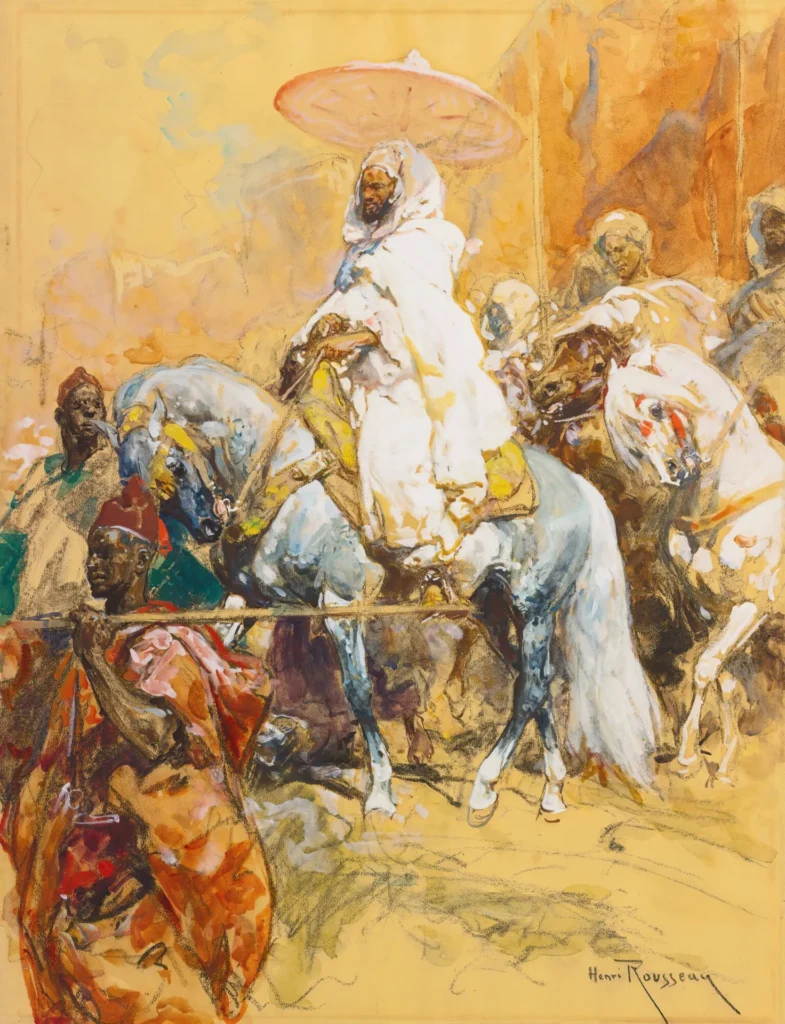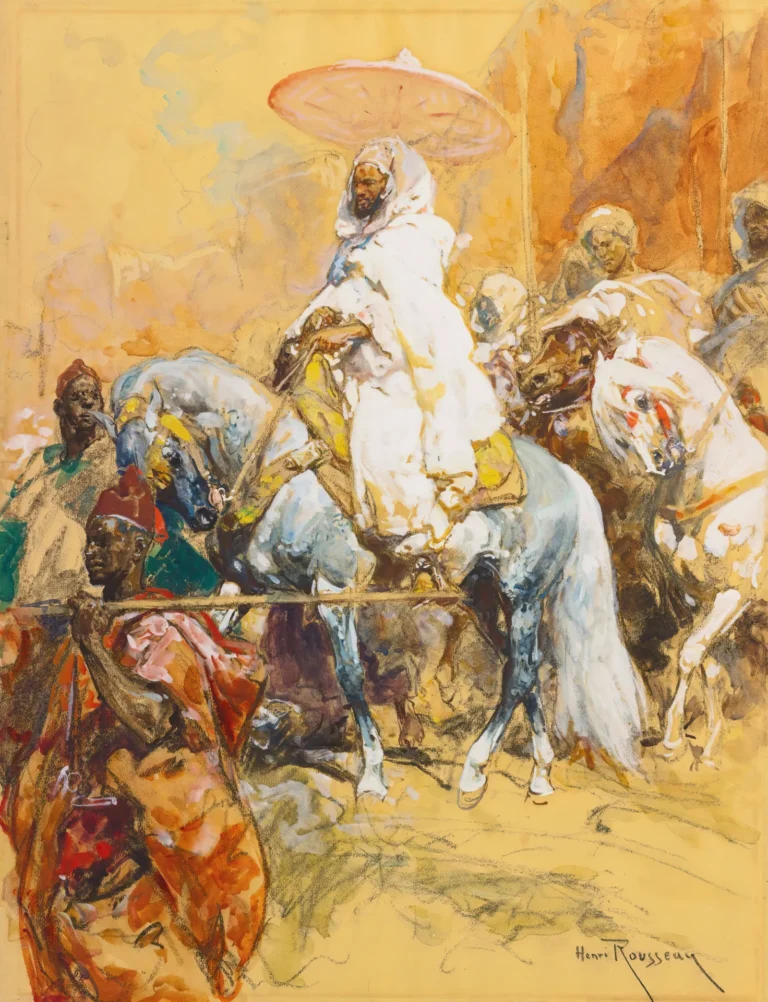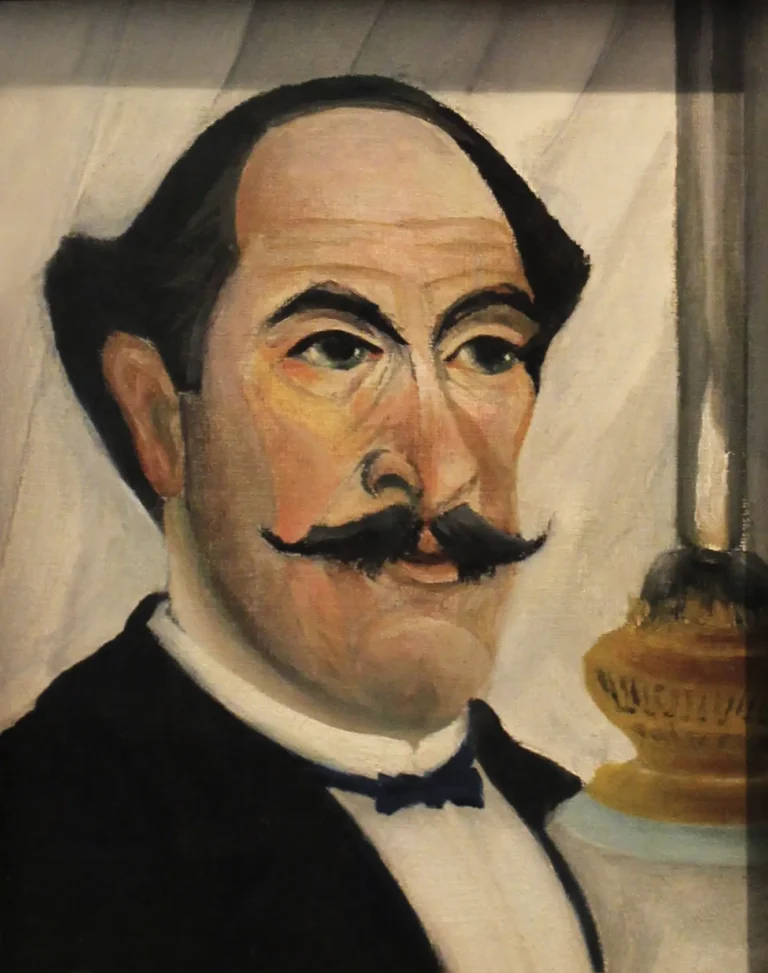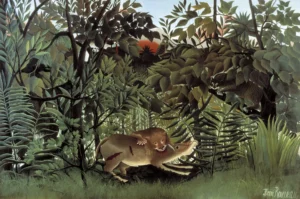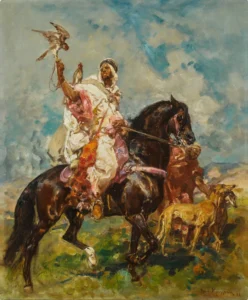Chieftain Or The Caid El Ayadi
Henri Émilien Rousseau’s Chieftain Or The Caid El Ayadi is a stunning Orientalist painting that highlights the exotic charm of North African culture. The artwork depicts a chieftain, or caid, dressed in richly detailed garments, embodying the romanticized view Europeans held of the East during the late 19th century. This piece not only reflects Rousseau's artistic prowess but also his fascination with themes of leadership and regional identity, set against an alluring backdrop that invites viewers into another world.
Late 19th Century
About the Artwork
Created during the height of Orientalism, Chieftain Or The Caid El Ayadi captures the essence of cultural fascination prevalent in Europe during the 19th century. Rousseau, drawn to the allure of North African themes, depicts a caid, emblematic of local leadership and authority, thus reflecting the complex interplay between power and cultural identity. This artwork serves not only as a visual delight but also as a commentary on the European perspective of Eastern societies, attempting to bridge worlds through the universal language of art.
Did You Know
The term ‘caid’ pertains to a local leader or chieftain in North Africa, a position that embodies authority and governance in tribal societies. This title reflects the complex social hierarchies found within these communities, often romanticized in Western depictions.
Rousseau’s fascination with Eastern themes is part of a larger trend known as Orientalism, where Western artists romantically depicted the life, culture, and landscapes of the Middle East, often imbuing their works with imagination rather than accuracy.
The enthralling scenes depicted in Rousseau’s paintings, including Chieftain Or The Caid El Ayadi. were born from a period of significant cultural exchange between Europe and the Middle East during the 19th century, propelled by increased travel, trade, and scholarly interest in Eastern cultures.
Liked what you see? Add it to your collection.
Enjoyed reading? Share it.
... continued
Artist
Henri Émilien Rousseau was a French painter, graphic artist, and illustrator. He is best known for his Orientalist scenes, which often feature horses and riders, reflecting his interest in exotic and Middle Eastern themes.
Artwork
Chieftain Or The Caid El Ayadi is one of Rousseau's notable works, characterized by its Orientalist style. The painting depicts a chieftain or a caid, which is a title for a local leader or tribal chief, often set in a North African or Middle Eastern context. The artwork showcases Rousseau's skill in capturing the details and atmosphere of these exotic settings.




